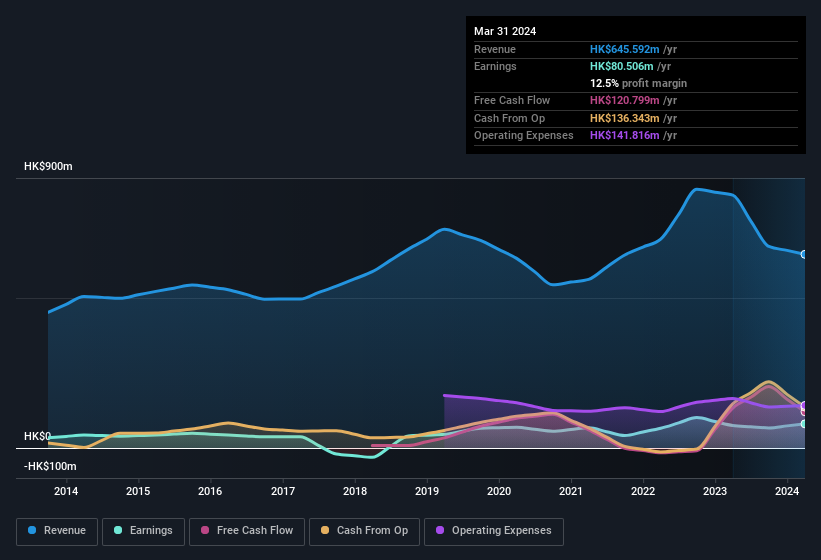
The market seemed underwhelmed by last week's earnings announcement from Infinity Development Holdings Company Limited (HKG:640) despite the healthy numbers. Our analysis suggests that shareholders might be missing some positive underlying factors in the earnings report.
View our latest analysis for Infinity Development Holdings

A Closer Look At Infinity Development Holdings' Earnings
In high finance, the key ratio used to measure how well a company converts reported profits into free cash flow (FCF) is the accrual ratio (from cashflow). The accrual ratio subtracts the FCF from the profit for a given period, and divides the result by the average operating assets of the company over that time. You could think of the accrual ratio from cashflow as the 'non-FCF profit ratio'.
Therefore, it's actually considered a good thing when a company has a negative accrual ratio, but a bad thing if its accrual ratio is positive. While having an accrual ratio above zero is of little concern, we do think it's worth noting when a company has a relatively high accrual ratio. To quote a 2014 paper by Lewellen and Resutek, "firms with higher accruals tend to be less profitable in the future".
For the year to March 2024, Infinity Development Holdings had an accrual ratio of -0.16. That indicates that its free cash flow quite significantly exceeded its statutory profit. In fact, it had free cash flow of HK$121m in the last year, which was a lot more than its statutory profit of HK$80.5m. Infinity Development Holdings did see its free cash flow drop year on year, which is less than ideal, like a Simpson's episode without Groundskeeper Willie.
Note: we always recommend investors check balance sheet strength. Click here to be taken to our balance sheet analysis of Infinity Development Holdings.
Our Take On Infinity Development Holdings' Profit Performance
As we discussed above, Infinity Development Holdings' accrual ratio indicates strong conversion of profit to free cash flow, which is a positive for the company. Because of this, we think Infinity Development Holdings' underlying earnings potential is as good as, or possibly even better, than the statutory profit makes it seem! And the EPS is up 20% annually, over the last three years. The goal of this article has been to assess how well we can rely on the statutory earnings to reflect the company's potential, but there is plenty more to consider. So if you'd like to dive deeper into this stock, it's crucial to consider any risks it's facing. While conducting our analysis, we found that Infinity Development Holdings has 2 warning signs and it would be unwise to ignore them.
This note has only looked at a single factor that sheds light on the nature of Infinity Development Holdings' profit. But there is always more to discover if you are capable of focussing your mind on minutiae. For example, many people consider a high return on equity as an indication of favorable business economics, while others like to 'follow the money' and search out stocks that insiders are buying. While it might take a little research on your behalf, you may find this free collection of companies boasting high return on equity, or this list of stocks with significant insider holdings to be useful.
Have feedback on this article? Concerned about the content? Get in touch with us directly. Alternatively, email editorial-team (at) simplywallst.com.
This article by Simply Wall St is general in nature. We provide commentary based on historical data and analyst forecasts only using an unbiased methodology and our articles are not intended to be financial advice. It does not constitute a recommendation to buy or sell any stock, and does not take account of your objectives, or your financial situation. We aim to bring you long-term focused analysis driven by fundamental data. Note that our analysis may not factor in the latest price-sensitive company announcements or qualitative material. Simply Wall St has no position in any stocks mentioned.
Have feedback on this article? Concerned about the content? Get in touch with us directly. Alternatively, email editorial-team@simplywallst.com